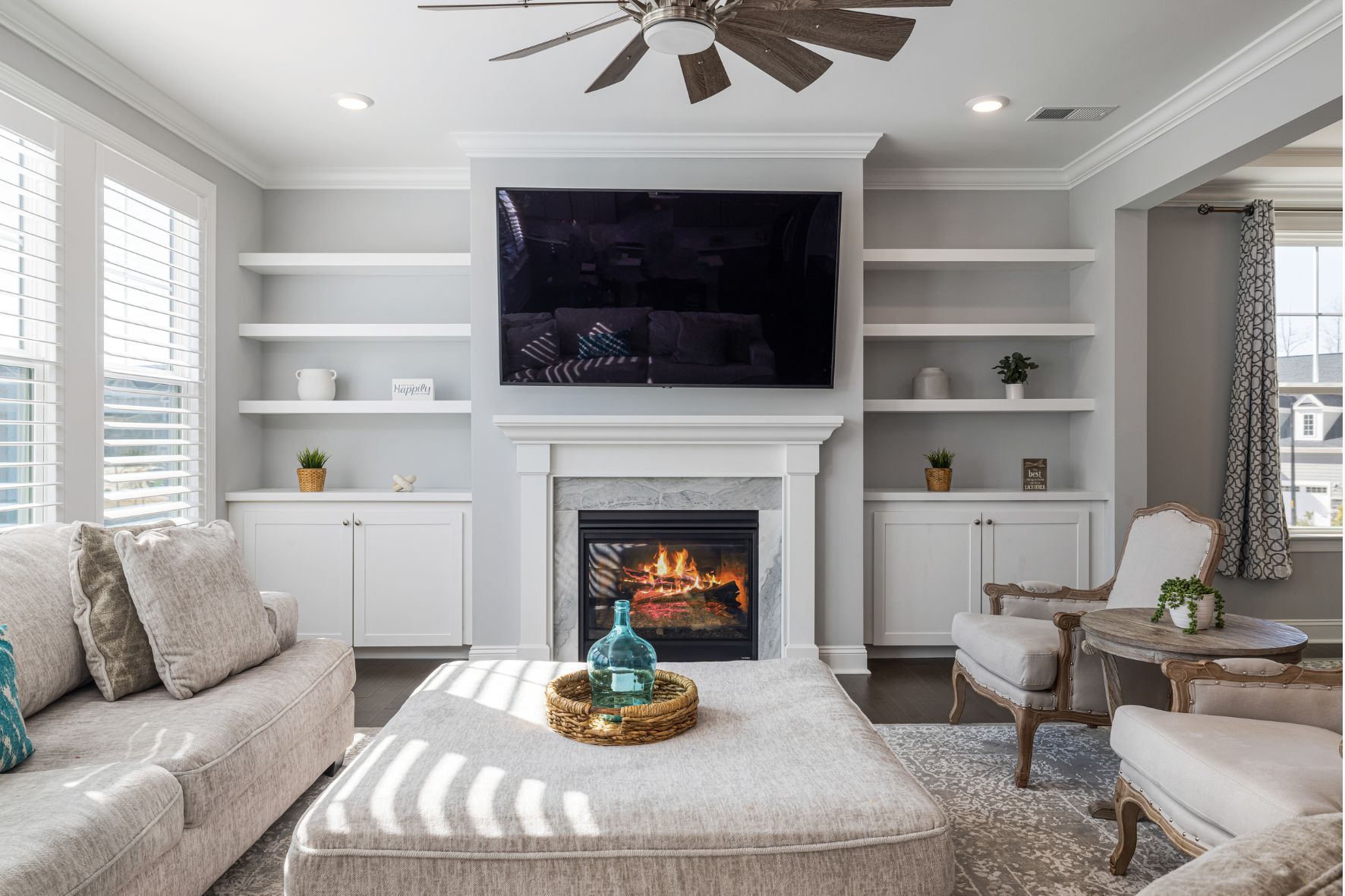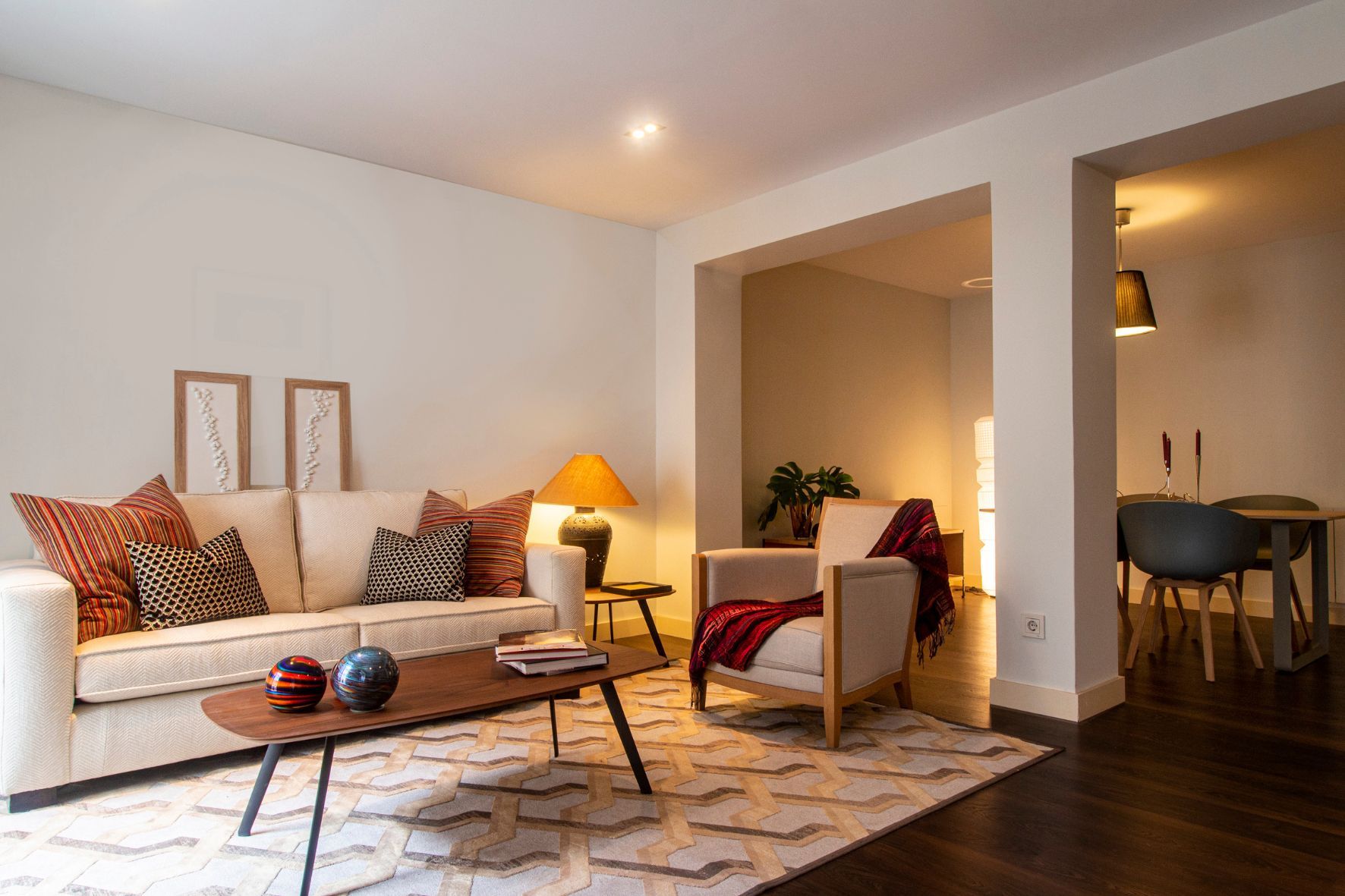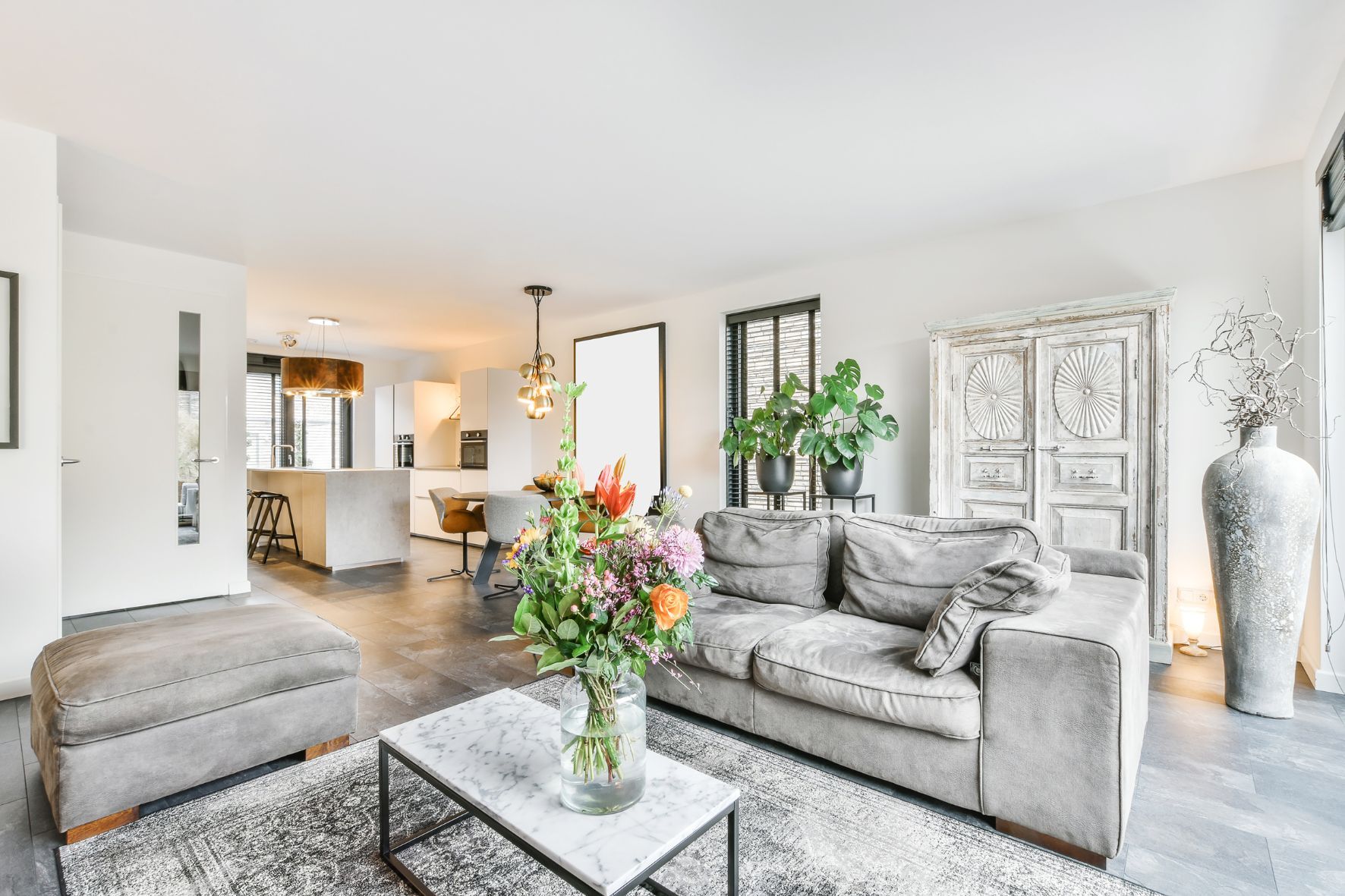The holiday season brings a whirlwind of joy, celebration, and gatherings. As loved ones come together, your living room often becomes the heart of these moments. From lively cocktail parties to cozy mornings unwrapping gifts, this space sets the tone for your festivities.
If your living room isn’t living up to your expectations, don’t worry. With some strategic changes and thoughtful planning, you can transform it into an inviting, functional, and stylish area. These 10 steps will help you pull together your living room before the holidays, ensuring your guests feel at home and your space shines.
1. Start Fresh: Visualize Your Living Room as a Blank Canvas
Before diving into decor or rearranging furniture, take a moment to imagine your living room completely empty — no furniture, no art, no rugs, and no distractions. This exercise helps you see your space in a new light and identify problem areas you may have overlooked.
Does the room feel cramped in certain spots? Are there areas that could benefit from a more open layout? Pay attention to areas that feel too busy or cluttered and think about what can be removed or relocated to improve the overall flow.
Start decluttering by removing items that don’t serve a purpose or contribute to the style you’re envisioning. For example, a bulky armchair that blocks the natural flow of the room might work better in another part of your home — or perhaps it’s time to donate it. This step costs nothing but can have a significant impact on how your space feels.
2. Define and Enhance Your Focal Point
A living room without a clear focal point can feel disjointed. Identifying and emphasizing this feature is essential for creating a cohesive and inviting atmosphere. Common focal points include a fireplace, a large piece of artwork, a feature wall, or even a striking piece of furniture like a bold sofa.
Once you’ve identified your focal point, assess its surroundings. Is it being overshadowed by clutter or competing elements? For example, a mantel might lose its impact if it’s overcrowded with decor, while a statement sofa can be obscured by too many throw pillows. Simplify the area around your focal point to draw attention to it and let it shine.
If your living room lacks a natural focal point, create one. A gallery wall, an eye-catching mirror, or a stunning rug can serve as a visual anchor that ties the room together.

3. Optimize the Layout for Flow and Functionality
A well-designed living room should be easy to navigate and comfortable for guests. Poor furniture placement can make a space feel cramped or disorganized, while a thoughtful layout can enhance both style and usability.
Consider the natural traffic flow in your living room. Are there clear paths for movement? Does the furniture arrangement encourage conversation? Take a few photos of your space from different angles and analyze them objectively. You may notice issues — like a piece of furniture blocking a doorway or awkwardly spaced seating — that aren’t obvious when you’re in the room.
Sketch out a few layout options before you start moving heavy pieces. Try grouping furniture to create cozy conversation areas or shifting pieces to improve sightlines. Even small adjustments, like angling a chair or repositioning a rug, can make a big difference.
4. Seek Inspiration and Set a Vision
If you’re struggling to pull your room together, take some time to gather inspiration. Browse design magazines, explore online idea boards, or revisit favorite photos you’ve saved. Pay attention to what resonates with you: Is it a particular color palette, a furniture style, or a clever use of accessories?
While you may not be able to replicate everything you love (a floor-to-ceiling window wall might be out of reach), focus on elements that are practical to incorporate. For instance, if you admire a cozy nook in a photo, consider adding a plush armchair and a small side table to a corner of your living room. Use these inspirations as a guide to refine your vision and ensure your space reflects your personal style.
5. Refine Your Color Palette for a Cohesive Look
Color has a profound impact on the mood and style of a room. A mismatched or overly busy palette can make a space feel chaotic, while a harmonious color scheme creates a sense of balance and unity.
Review the colors in your living room and assess their overall effect. Are there too many competing hues? If so, try removing or toning down elements that disrupt the flow. For example, you might replace brightly patterned throw pillows with ones in a solid, complementary color.
On the other hand, if your room feels too neutral or lacks personality, add pops of color through accessories like rugs, curtains, or artwork. Seasonal accents — such as a deep red throw blanket or green vases — can also bring warmth and festivity to your space.

6. Introduce Symmetry for Visual Balance
Symmetry is a powerful design tool that can make a room feel organized and polished. It appeals to the eye and creates a sense of harmony, especially in living spaces meant for entertaining.
Incorporate symmetry through paired items, such as matching table lamps, art pieces, or side chairs. For instance, flanking a sofa with identical end tables and lamps can instantly elevate the look of your living room. Even simple touches, like arranging two throw pillows on either side of a couch, can contribute to a balanced design.
If you prefer a more eclectic style, use symmetry as a foundation and then layer in asymmetrical elements for a dynamic yet cohesive look.
7. Focus on Proportions and Spacing
Proportions and spacing are key to making your living room comfortable and functional. Furniture that’s too close together can feel cramped, while pieces that are too far apart may seem disconnected.
Follow these general guidelines for optimal spacing:
Position the coffee table 15–18 inches from the sofa for easy access. Place side tables within arm’s reach of chairs and sofas. Allow at least 3 feet of clear space for walkways. Arrange seating so guests are no more than 10 feet apart to encourage conversation.
These adjustments ensure your living room feels inviting and functional for both everyday use and holiday gatherings.
8. Layer Your Lighting for Warmth and Ambiance
Lighting can make or break the atmosphere of a room. A single overhead fixture often casts harsh shadows and fails to create a cozy vibe. Instead, aim for a layered lighting approach that combines multiple sources.
Incorporate a mix of table lamps, floor lamps, and accent lighting like candles or string lights. For a festive touch, consider using twinkle lights or lanterns. If your overhead fixture has a dimmer switch, use it to set the mood during evening events.
Aim for at least three light sources in smaller rooms and five to seven in larger spaces. This approach creates depth and adds warmth, making your living room feel more inviting.

9. Prepare for Extra Guests with Flexible Seating
The holiday season often brings more guests than expected, so having additional seating options is a must. Look for versatile pieces that can be easily moved or tucked away when not in use.
Consider these ideas:
Place a pair of stools or benches under a console table. Use an upholstered ottoman as a coffee table that can double as a seat. Add folding chairs with stylish covers for last-minute seating. Position a low bench along an empty wall to provide extra spots without crowding the room.
Having these options on hand ensures everyone has a comfortable place to sit, no matter how large the gathering.
10. Add the Final Touches to Elevate Your Space
Once the major updates are complete, it’s time to focus on the details that bring your living room to life. These finishing touches add personality and charm, making your space feel warm and welcoming.
Here are some ideas:
Arrange coffee table books, candles, and small vases with fresh flowers for a polished look. Display a holiday-themed bar tray or tea set to add a festive touch. Incorporate cozy textures with throw blankets and pillows in seasonal colors. Spot-clean upholstery and vacuum rugs to ensure everything looks fresh.
These small efforts go a long way in creating an inviting space where guests will feel at home.
By following these 10 steps, you’ll transform your living room into a beautiful and functional space, ready to host holiday celebrations. With careful planning and attention to detail, your efforts will pay off, leaving you with a room that’s not only guest-ready but also a joy to enjoy year-round.

